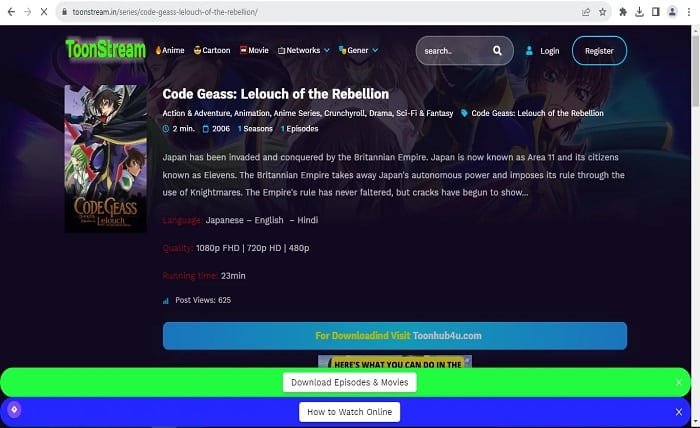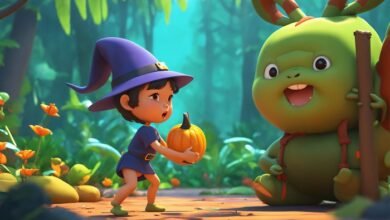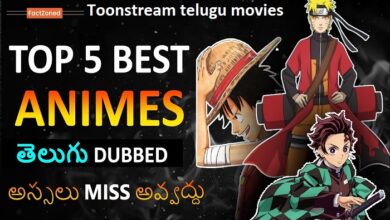Exploring the Power of Toonstream in Movies: A New Era of Animation and Entertainment

Introduction
In the evolving world of cinema, animation has undergone monumental changes, with one of the most innovative technologies being Toonstream in movies. Toonstream is a digital animation technique that is transforming the way animated content is produced and consumed. Unlike traditional animation methods that require lengthy and labor-intensive processes, Toonstream integrates sophisticated technology to streamline the animation process, allowing for a more dynamic, interactive, and immersive movie experience. This new approach is changing the landscape of animated films, offering both creators and audiences a fresh perspective on storytelling. But what exactly is Toonstream, and how is it reshaping the movie industry?
Toonstream: What Is It?
Toonstream in movies refers to a cutting-edge animation technology that blends traditional 2D animation with modern digital techniques. This technology allows filmmakers to create fluid, visually stunning animated sequences without the constraints of traditional methods like hand-drawing each frame or relying on complicated CGI models. Instead, Toonstream relies on software that can generate lifelike animations in real time, bringing characters and scenes to life with remarkable speed and efficiency.
The development of Toonstream technology enables filmmakers to streamline production, reduce costs, and introduce new levels of interactivity in their films. This technology has been embraced by many animated movie studios, resulting in films that feel both contemporary and timeless. Its use in movies like “Spider-Man: Into the Spider-Verse” has shown just how far Toonstream can push the boundaries of animated storytelling.
The Technology Behind Toonstream in Movies
The success of Toonstream in movies can be attributed to several technological advancements. One of the most crucial aspects is the use of AI and machine learning algorithms to create animation sequences. This allows the software to automatically adjust and optimize the animation, making the process faster and more efficient.
Moreover, Toonstream often incorporates motion capture technology, where real-life actors’ movements are recorded and then transferred into animated characters. This process allows animators to create more realistic and expressive characters, while still maintaining the unique style that makes Toonstream animation stand out. The integration of these advanced tools and techniques is one reason why Toonstream is becoming so popular in the movie industry.
Toonstream in Movies: Revolutionizing the Animation Process
One of the most exciting aspects of Toonstream in movies is how it revolutionizes the animation production pipeline. Traditional animated films can take years to produce, with numerous teams working on each aspect of the movie. However, Toonstream has significantly shortened the production time by automating many aspects of the animation process.
With the ability to generate animations in real time, Toonstream allows filmmakers to create high-quality content quickly, which is particularly beneficial in an era when audiences demand faster turnaround times for content. The reduced production time also means that more films can be produced, and more stories can be told in a shorter amount of time. The combination of speed, cost-efficiency, and quality is what makes Toonstream such an attractive option for filmmakers today.
Toonstream in Movies: Impact on Storytelling and Visual Style
While the technological benefits of Toonstream in movies are clear, its impact on storytelling and visual style is just as significant. With this technology, filmmakers are no longer confined to the limitations of traditional animation. They have greater freedom to experiment with different styles, techniques, and visuals, creating a more immersive experience for audiences.
One of the best examples of this is the film “Spider-Man: Into the Spider-Verse,” which uses Toonstream to create a comic book-inspired aesthetic that blends 2D animation with 3D effects. The result is a visually striking film that feels like a living comic book, which would have been difficult to achieve using traditional animation techniques. This unique visual style has set a new standard in animated filmmaking and demonstrates how Toonstream can be used to enhance storytelling in innovative ways.
The Role of Toonstream in Expanding Audience Engagement
Toonstream in movies also has the power to expand audience engagement by offering new interactive experiences. While traditional animated films offer a passive viewing experience, Toonstream technology can be used to create films that allow for more active involvement from the audience.
For example, Toonstream can be used to create films with branching storylines or interactive elements, where viewers can make choices that affect the outcome of the movie. This type of interactive cinema is becoming more popular, particularly with younger audiences who are accustomed to engaging with content on digital platforms. By incorporating Toonstream into movies, filmmakers can create a more engaging and personalized experience, blurring the line between traditional movies and video games.
Toonstream in Movies: The Future of Animation
The future of Toonstream in movies is incredibly promising, with filmmakers continuing to explore new ways to push the boundaries of animation. As technology advances, Toonstream will likely become even more sophisticated, allowing for more lifelike and dynamic animation that is indistinguishable from reality. Virtual reality (VR) and augmented reality (AR) may also play a role in the future of Toonstream, offering entirely new ways for audiences to experience animated films.
Moreover, as Toonstream becomes more widely adopted, it is likely that we will see an increase in hybrid films that combine live-action and animation, blending the best aspects of both mediums. This could lead to a new wave of animated movies that are both visually stunning and narratively engaging.
Toonstream in Movies: How It’s Shaping the Industry
Toonstream in movies is not only changing how films are made, but it’s also shaping the broader entertainment industry. Major movie studios, streaming platforms, and independent filmmakers are all experimenting with Toonstream to create new and exciting content. As the technology becomes more accessible, we can expect to see more studios incorporating it into their films, which could lead to a democratization of animation production.
This democratization means that more filmmakers, regardless of their budget or resources, will be able to create high-quality animated films. It opens up new opportunities for creativity and innovation, as well as new voices and stories that may not have had a platform in the past. Toonstream is, therefore, helping to create a more diverse and inclusive animation industry.
Conclusion
Toonstream in movies is a groundbreaking technology that is revolutionizing the world of animation. By combining advanced software, motion capture, and AI algorithms, it allows for faster, more efficient production of animated films, without compromising on quality. But beyond its technical advantages, Toonstream is reshaping how filmmakers tell stories and engage with audiences, offering new possibilities for interactive and immersive content.
As the technology continues to evolve, Toonstream will undoubtedly play an even more significant role in the future of animation, providing fresh and exciting opportunities for filmmakers to explore. It’s an exciting time for the world of animated movies, and Toonstream is at the forefront of this transformation.
FAQs
1. What is Toonstream in movies? Toonstream in movies refers to an advanced animation technology that blends traditional 2D animation with modern digital techniques, allowing for faster production and enhanced storytelling.
2. How does Toonstream work? Toonstream uses AI, machine learning, and motion capture technology to create fluid, lifelike animations in real time, reducing production time and cost.
3. What films have used Toonstream technology? Notable films like “Spider-Man: Into the Spider-Verse” have utilized Toonstream technology to create visually stunning and innovative animation.
4. Can Toonstream be used for live-action movies? While Toonstream is primarily used for animated films, its technology can also be incorporated into live-action movies for hybrid storytelling, blending animation with live-action footage.
5. What does the future hold for Toonstream in movies? The future of Toonstream in movies looks promising, with advancements in VR and AR likely to offer new ways for audiences to experience animated films, and increasing accessibility for filmmakers to create high-quality animated content.





